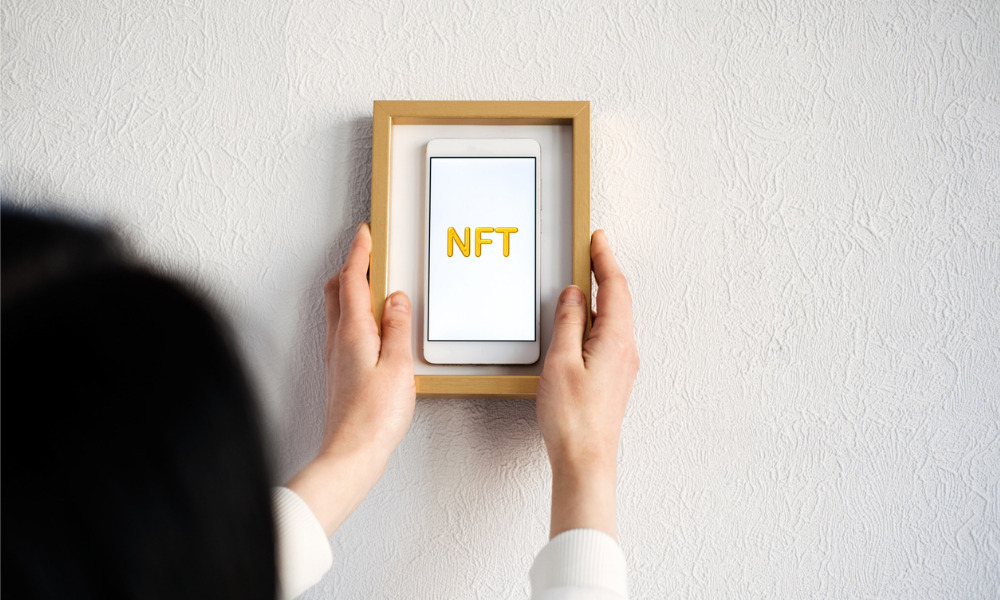They're the most exotic and innovative types of digital assets today – but are these collectibles a good investment?

If you’ve been anywhere even in the general vicinity of an internet connection in the last year, especially if you used said internet connection to log onto Twitter, chances are you’ve encountered the term “non-fungible token.” You’ve probably seen that term attached to different types of valuable collectibles like trading cards, music, or curiosities of internet culture like the infamous “Charlie bit me” YouTube video.
You’ve also probably heard about the eye-watering values non-fungible tokens can fetch. One prolific NFT artist, Beeple, set a high bar in March last year when his work Everydays: The First 5000 Days sold for $69.3 million. That bar was raised in December when The Merge, made by digital artist PAK, was sold for around $92 million, though some don’t count that as they don’t consider it a single piece but a series of artworks.
And while few others have cracked into the eight-figure club, there are enough examples of multi-million-dollar sales to keep people excited.
So what exactly are NFTs? Are they worth investing in, like some experts have said? And what’s the catch? There’s a lot of research to do in this growing space, but here’s some information to get you started.
What is a non-fungible token (NFT)?
An NFT is a digital asset that represents real-world items and memorabilia like art, music, in-game items, and videos. Even though NFTs have existed since 2014, they’re catching fire as an innovative way to buy and sell popular artwork. Because they exist on a blockchain, each NFT is certifiably unique, which is where their value comes from (we’ll talk more about that later).
Some people might get confused between NFTs and cryptocurrencies; after all, both are digital assets that rely on blockchain technology. But any given cryptocurrency has just one price at any point in time, so you can exchange any two units of bitcoin, for example, and still end up with the same value. Meanwhile, each NFT is uniquely identifiable, and its value depends solely on what someone is willing to pay for it, so it’s impossible to swap two NFTs in the same way.
What do you get when you buy an NFT?
The main game-changing aspect of NFTs is the fact that they have unique certificates of ownership attached to the original item. Aside from that, a record of who owns what NFT is stored on the Ethereum Blockchain, which is a shared, unalterable digital ledger.
That doesn’t mean others can’t see or share it, though. The official owner of Beeple’s Everydays: The First 5000 Days is Vignesh Sundaresan, who founded the Metapurse NFT project and the bitcoin ATM provider, Bitaccess. But the image has been viewed, shared, and copied millions of times by people the world over. Still, not one of those other people can ever claim to have the real McCoy unless Sundaresan decides to let it go.
Examples of NFTs
The average cost of an NFT can vary from just over $100 to almost $1,000, depending on where someone buys them. But aside from Beeple’s record-setting opus, there are many examples of NFT pieces and collections that sold for millions:
- Jack Dorsey’s first tweet ($2.9 million)
- The original source code for the internet – nearly 10,000 lines, courtesy of Sir Tim Berners-Lee ($5.4 million)
- An NFT artwork called A Coin for the Ferryman, created by XCopy in 2018 ($6 million)
- An algorithmically generated avatar of an ape with a knitted hat and gold chain called CryptoPunk #5217 ($5.59 million)
- A collection of 101 ape-themed avatar NFTs from the Bored Ape Yacht Club ($24.4 million)
What are the pros and cons of buying NFTs?
There are a lot of potential benefits to buying NFTs. Superfans might be into the idea of owning NFTs released by their favourite musician, artist, or athlete. For the obscenely rich compulsive collector who doesn’t have the garage space for any more Bentleys, NFTs are a possible outlet. And depending on how they program the smart contracts underlying their digital NFT art, creators can get a percentage of sales each time their work changes hands, which can be an appealing feature to those who want to directly support a specific artist.
Of course, the process of buying NFTs can be intimidating to the technologically uninitiated. NFT transactions are usually conducted in dedicated NFT marketplaces, and most marketplaces are currently powered by the Ethereum network. That means people need Ethereum’s native cryptocurrency token, Ether, to buy an NFT. That means opening an account with a crypto exchange like Binance and buying tokens from there.
The tokens must also be stored in a dedicated digital location known as a crypto wallet. People can register and open wallets on platforms like Metamask, Binance, or Coindesk. Once they have a wallet, they can send any cryptocurrency they buy from a crypto exchange to that wallet, as long as the wallet’s compatible with that cryptocurrency.
Should I invest in non-fungible tokens?
For many people, NFTs hold a lot of appeal. Each NFT is a verifiably authentic and unique digital asset, so they have inherent rarity. And if there’s enough demand for the NFT you own after you buy it, you can certainly turn a healthy profit.
But the marketplace for NFTs in general is very young, so there’s not much performance history for people to evaluate. Aside from celebrities and famous artists getting into the trend, it’s hard to say for sure which NFTs will become popular. And after you buy an NFT, demand for it may suddenly fade, causing its value to go down. That’s not to mention the potential risks of deception as the market is still in its early stages.
So at this point, it’s hard to say anything other than it’s a personal decision to be made by people who can afford it and have done their homework.



